Successful Conclusion of the 9th Roundtable Meeting of the High-Efficiency HJT 740W+ Club: HJT Tech Fuels Energy Transition
On December 26th, the 9th Roundtable Meeting of the High-Efficiency Heterojunction (HJT) 740W+ Club successfully concluded at Mingyang's global headquarters in Zhongshan, Guangdong. Mingyang assumed the role of the rotating chairman. The event was attended by representatives from 13 member companies, listed alphabetically as follows: Grand Sunergy Technology, Huasun, Hency Solar Technology, Jetion Solar, Leascend Photovoltaic, Mingyang (again, as the rotating chairman), Quanwei New Energy, Risen Energy, SoleFiori, Soltrend, SPIC New Energy, Golden Solar, and Winhitech. Solarzoom was also present as a guest. The conference, themed "HJT Tech Fuels Energy Transition," aimed to bring together the latest technological advancements and cutting-edge innovations in photovoltaic (PV) HJT, fostering a diverse platform for industry collaboration on typical cases and application scenarios, sharing opportunities, and jointly setting eyes on energy transformation.
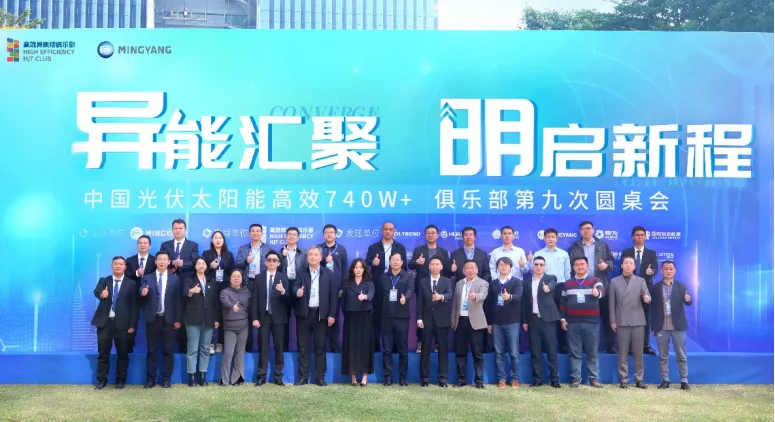
Industry experts and company leaders discussed topics related to HJT technology innovation, production processes, and market trends. Their collective aim was to actively contribute to the technological advancement and high-quality development of HJT products. Li Changhong, CEO of SoleFiori, emphasized that challenges can be turned into opportunities through close cooperation and collective action among club members, despite the uncertainties lying ahead. The future of HJT and the industry appear to have a bright future.
Qian Yu, General Manager of Mingyang’s Business Management Center and Assistant to the President, emphasized that the core of new energy lies in manufacturing, with technological innovation serving as its foundation and driving force. To propel the advancement of PV, it is crucial to focus on the integrated development across innovation, industry, capital, and talent chains. By thoroughly implementing the integration of achievements, creating new application scenarios, and fostering a sustainable innovation ecosystem together, we can truly facilitate the healthy and orderly growth of the industry.

Zheng Lixin, General Manager of Mingyang's General Management Center, chaired the meeting. He emphasized that the club boasts extensive high-quality resources in science and education. With collaborative efforts and discussions among alliance members, he was confident that they could jointly propel the high-quality development of China's PV industry. This set the stage for several pivotal discussion topics.
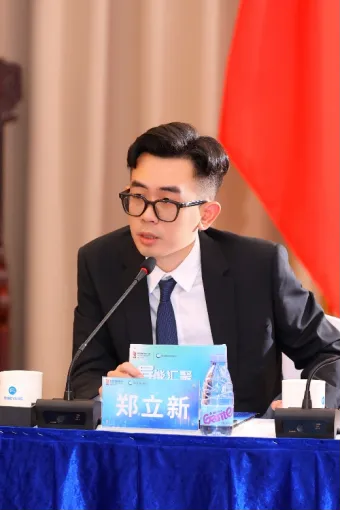
01. PV Off-Grid Hydrogen Dilemma: Directions for Breakthrough
In alignment with the national strategy and in support of China's carbon goals, enhancing the efficiency of renewable energy usage and invigorating the clean energy ecosystem have become corporate responsibilities and missions. How can we harness renewable and clean energy sources, such as wind and solar power, to fuel the development of green energy in this new era? Peng Qinliang, the Deputy Chief Engineer for Integrated Hydrogen, Ammonia, and Methanol Design at Mingyang, delivered a presentation titled "PV Off-Grid Hydrogen Dilemma: Directions for Breakthrough." He contended that, against the backdrop of a market trend marked by fierce internal competition and external expansion, the PV industry urgently needs to integrate with the hydrogen energy sector. By harnessing wind and solar resources in conjunction with consumption scenarios, innovative and viable application scenarios and business models can be developed collaboratively, ultimately leading to a comprehensive green solution.
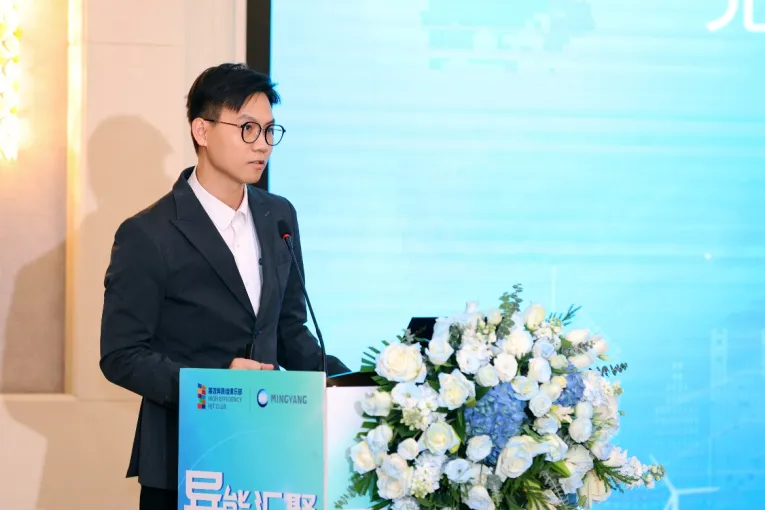
Li Pengkai, Director of the Chairman's Office at Huasun, expressed his appreciation for Mingyang's pioneering work in the field of off-grid hydrogen production. Huasun is also closely monitoring the development of this technology and actively exploring the use of PV off-grid hydrogen production to achieve self-manufacture and efficient recycling of electronic-grade hydrogen required for HJT manufacturing itself, he stated. Once this solution is commercialized, it will further promote efficiency enhancement, cost reduction, and carbon footprint reduction in the HJT industry. In the future, Huasun will share its technical solutions with members to benefit the industry collectively.
Qiu Wenkai, the Executive General Manager of Mingyang, emphasized that Mingyang, a key player in the entire new energy industry chain, is actively expanding its presence in sectors such as wind-solar-hydrogen storage. Regarding carbon footprint, HJT technology offers a lower environmental impact. To promote mutually beneficial cooperation between enterprises and users, it is crucial to focus on integrating new energy resources, minimizing energy replacement costs, and fostering the concurrent development of solar-driven hydrogen.
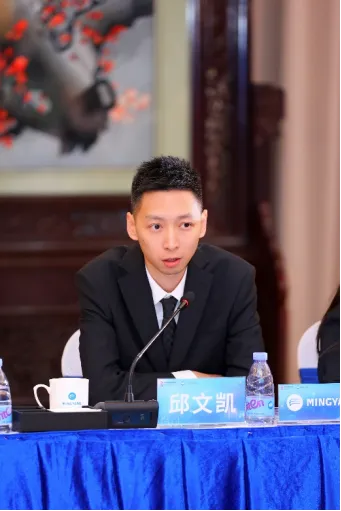
02. Report and Research on Current Production Status of 0BB Technology Solution
The 0BB technology solution, as a cutting-edge industrial innovation in the field of PV modules, is gradually propelling HJT products into broader markets. Zou Huilei, the R&D Director of Mingyang, delivered a speech titled "Report and Research on Current Production Status of 0BB Technology Solution." Mingyang currently adopts the IFC direct lamination technology, which has passed reliability tests in accordance with IEC standards in the laboratory and has obtained certification from TÜV, a third-party institution, he stated. 0BB can significantly reduce silver paste consumption, thereby lowering the overall manufacturing cost of PV cells. HJT cells demonstrate even more prominent effects compared to BC cells. Mingyang's 0BB technology employs ultra-fine solder ribbon, which results in lower surface stress under varying temperature conditions. It has more contact points with fine grid lines, making the cells less prone to micro-cracks and effectively increasing the yield of good modules. Mingyang will gradually expand the production scale of 0BB products based on market demand, ensuring timely supply with quality and quantity in line with market requirements. It can achieve cost reduction and efficiency enhancement, empowering zero-carbon PV.
Zhang Wenbin, the Chief Technology Officer of Grand Sunergy Technology and Executive Dean of the Renewable Energy Research Institute, made a proposal. In such intense industry competition, HJT technology must leverage its technical advantages to develop unique products that stand out from TOPCon and BC technologies. Identifying a core competitive edge is crucial for HJT to excel in this race. On the other hand, cost remains a central concern for HJT technology. In the future, it will be necessary to reduce costs while maintaining product quality. Consequently, there is a need to collaborate with upstream and downstream suppliers to focus on collaborative innovation within the supply chain and jointly tackle cost reduction at all stages.

03. Advancing the Discussion on the 210.6 Cell Size
As cell sizes continue to evolve, we remain committed to the spirit of craftsmanship and relentless pursuit of excellence. Ensuring that our product standards endure the test of time is crucial for sustaining technological advancements and fostering healthy industry growth. Building on discussions from a previous meeting, Yang Bochuan, Dean of Risen Energy's Global PV Research Institute, delivered a speech titled "Advancing the Discussion on the 210.6 Cell Size." He advocated for harnessing the strengths of CVD and PVD plate production equipment. With the unchanged module, the wafer size can be optimized to increase the power of the module. Risen Energy spearheads the 210 G12 Pro product, achieving increased component power through silicon wafer tolerance optimization without additional costs. In the future, the silicon wafer industry will also focus on achieving finer refinements.
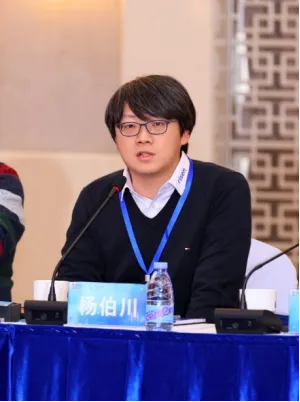
Tang Doudou, Vice President of Leascend Photovoltaic, emphasized that the HJT industry stands at a pivotal juncture, necessitating swift adaptation to change. The industry strives to achieve a significant increase in overall power products and the establishment of uniform standards in the first half of next year. By boosting product power and energy conversion efficiency, the industry can cater to the market's demand for efficient and reliable PV products. Furthermore, setting a unified standard will foster industry standardization, mitigate disorderly competition, and optimize resource allocation.

04. Exploring Breakthrough Paths for HJT: A SWOT Analysis of TOPCON, BC, and HJT Technology Routes
With its remarkable efficiency potential and growing market acceptance, HJT is emerging as a rising star in PV technology. From material innovation to process optimization, cost reduction, and market promotion, HJT is striving to achieve technological breakthroughs that surpass Topcon and BC. In this context, experts engaged in a SWOT analysis of the three mainstream high-efficiency solar technologies.
Dr. Zhang Zhongwei, Chief Scientist at Grand Sunergy Technology and Head of the Renewable Energy Research Institute, highlighted two pivotal issues: Firstly, in terms of market advancement, there is a pressing need for a sense of urgency. How can HJT technology secure a larger market share in the fiercely competitive landscape dominated by Topcon, HJT, and BC? Secondly, in terms of technological enhancement and product applications, how can HJT technology boost efficiency and cut costs while maintaining reliability to significantly widen its power advantage? He emphasized that leading HJT companies should play a leading role in scale. Enterprises should expand in specific directions, such as efficiency upgrades (both intrinsic efficiency improvements in HJT and accelerated R&D in hybrid BC), cell size, and differentiated application areas (particularly in high-temperature regions and environments with high bifacial power generation rates), to achieve better product performance and market share.
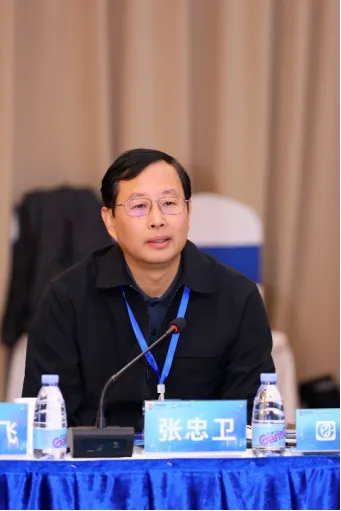
Tang Xuan, Executive Vice President of Leascend Photovoltaic, noted that while the three major PV technologies each possess unique strengths, they generally encounter challenges in fully realizing their power generation potential. This limitation constrains the overall efficiency improvement of the PV industry. In contrast, HJT technology exhibits clear advantages in power generation, providing new growth opportunities for the industry. Tang emphasized the importance of ongoing exploration and innovation to not only sustain high power generation efficiency but also to overcome current technological limitations, propelling the PV industry towards greater efficiency and sustainability.
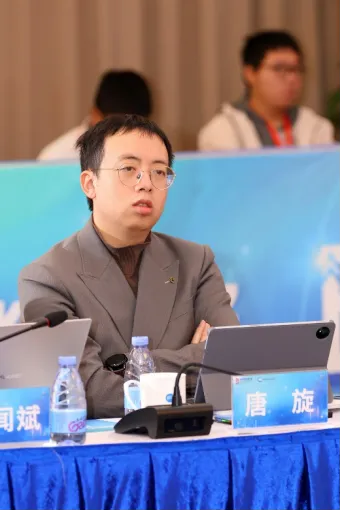
Li Yang, Deputy General Manager of SPIC New Energy, emphasized that the consumer market is increasingly focused on differentiating factors such as power generation and product quality. Communicating HJT's advantage of having the lowest carbon footprint among mainstream technologies to consumers and enhancing its added value and comparative positioning will be key highlights for HJT. Li also suggested that cost reduction and efficiency enhancement technologies for HJT, including 0BB and 210.6 large-size wafers, should leverage the collective strength of the industry. Within the club, he proposed establishing a guideline akin to a group standard to refine products, drive technological progress, and form a cohesive force to compete with Topcon and BC technologies.
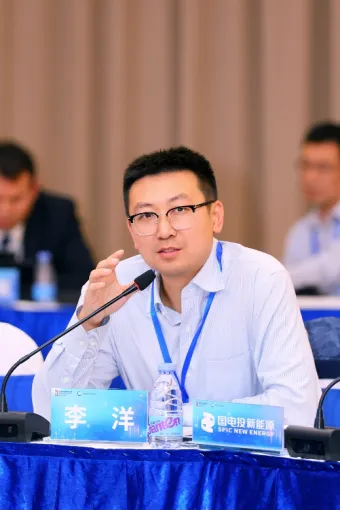
From the discussions among alliance members, Zheng underscored the significance of utilizing the resources of each enterprise within the club to reach a consensus on standards. Mingyang has sustained close collaboration with various alliance members, including business engagements with Leascend Photovoltaic, Risen Energy, and Golden Solar. Unifying technical standards will promote the standardized development of the industry. The alliance is anticipated to collaborate on promoting and establishing technical standards and potentially issuing white papers, thereby collectively advancing PV technology.
05. Collaborative Development and Maintenance of HJT Market Promotion PPT and Economic Model
How can collaborative innovation foster more competitive market promotion strategies and economic models for HJT? Building on the previous topic, Hou Hongtao, Vice President of Technology at SoleFiori, proposed a discussion on the joint development and maintenance of the HJT market promotion presentation and economic model. Hou emphasized that the unified presentation of comparative power station data and the establishment of standardized model schemes are essential for creating more persuasive materials and documents to convince the market and consumers.
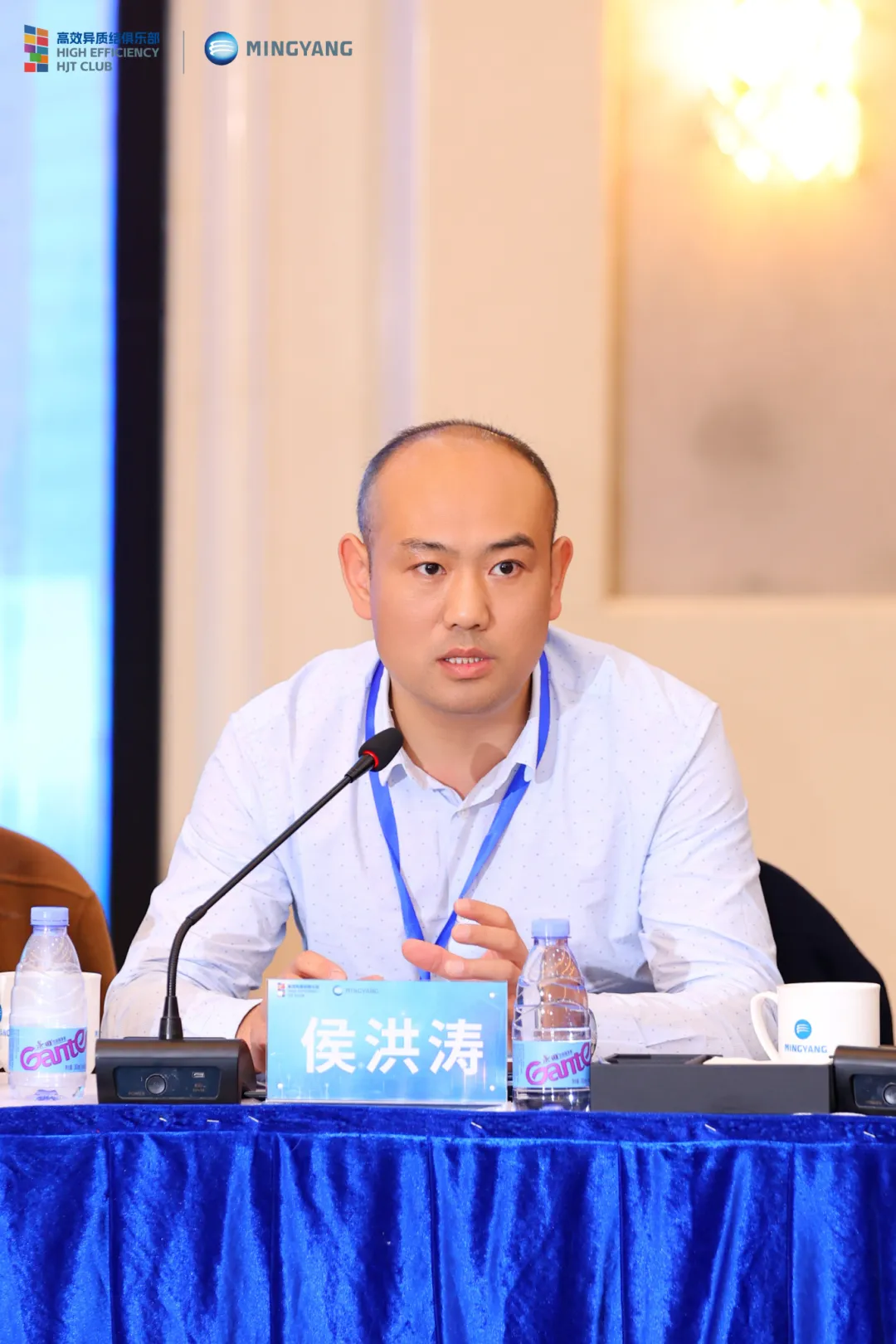
Zhang Bojing, Sales Director of the Shanghai Electric Marketing Center, emphasized that collecting power station data should consider input from three sources: third-party organizations, the company itself, and customers. This approach ensures the objectivity of the data.
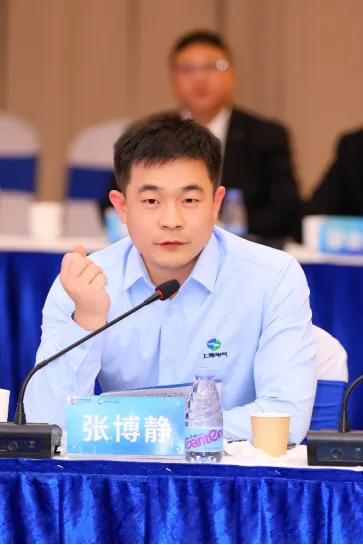
After considering the proposals and opinions of alliance leaders, Zheng proposed initiating the first collaborative decision-making effort since the inception of the alliance roundtable meetings. The proposal entails jointly developing a market promotion PPT for HJT technology. SoleFiori will provide the PPT outline, while Solarzoom will spearhead the organizational efforts, assigning specific tasks to participating enterprises for collaborative completion. The PPT will undergo continuous iteration and improvement in subsequent meetings to ensure its effectiveness and alignment with market needs.
Concerning the calculations of power generation output and investment return rates, the meeting unanimously agreed to consolidate the existing power generation project data from various companies. Solarzoom will take the initiative to organize and publish a "Power Station Project Data" series on its public WeChat account, with the relevant data provided by participating enterprises to enrich the repository of HJT market project cases. The content of each issue in the series will ultimately be shared and published as project data by the respective enterprises on their WeChat accounts. This initiative aims to further establish HJT project standards and ensure the rigor of data and reporting.
06. Ensuring "Price Self-Discipline" for HJT Under New Industry Policies
In recent years, national policies have actively guided PV enterprises to reduce projects focused solely on capacity expansion and instead prioritize technological innovation, product quality improvement, and cost reduction. Against this backdrop, HJT should focus on strengthening technological R&D and ensuring product quality. Quanwei New Energy raised the question: How can HJT maintain "price self-discipline" under the new policy regulations? They proposed that, in the name of the club, a guideline price for HJT be established to foster price self-discipline across the industry.
Upon Mingyang's suggestion, alliance members unanimously agreed that in subsequent monthly meetings, all alliance units will endeavor to reach a consensus, share project updates and related data analyses, and gradually establish an industry-wide "price self-discipline" corporate consensus. Enterprises will promote the growth of PV industry innovation with new quality productivity.
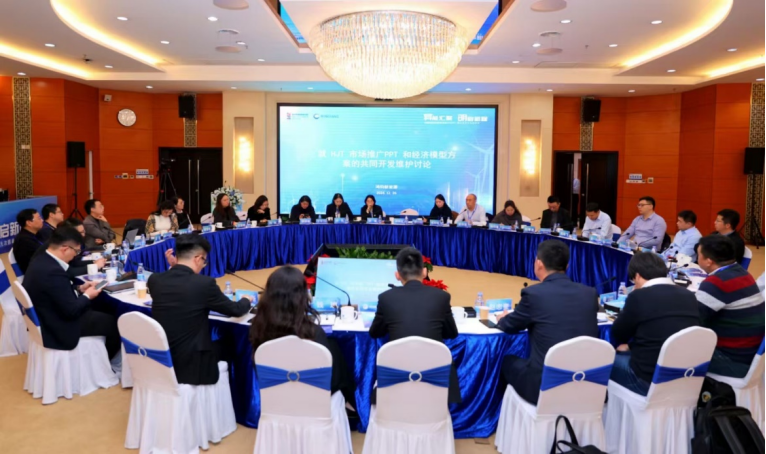
The successful conclusion of this meeting has further strengthened the commitment of all member companies to progress together. HJT technology will serve as a growth engine for the global green transition and the sustainable development industry through overcoming challenges and continuous innovation. It will continue to share China's green story, implement China's green practices, and comprehensively empower the construction of a green and clean energy system, effectively contributing to the achievement of China’s carbon goals.








